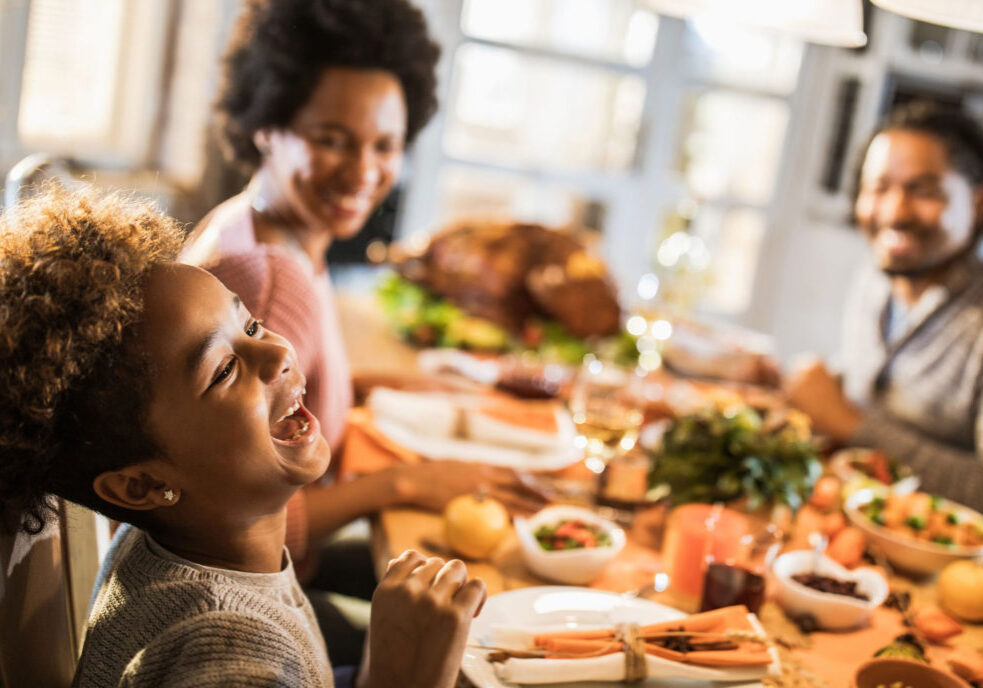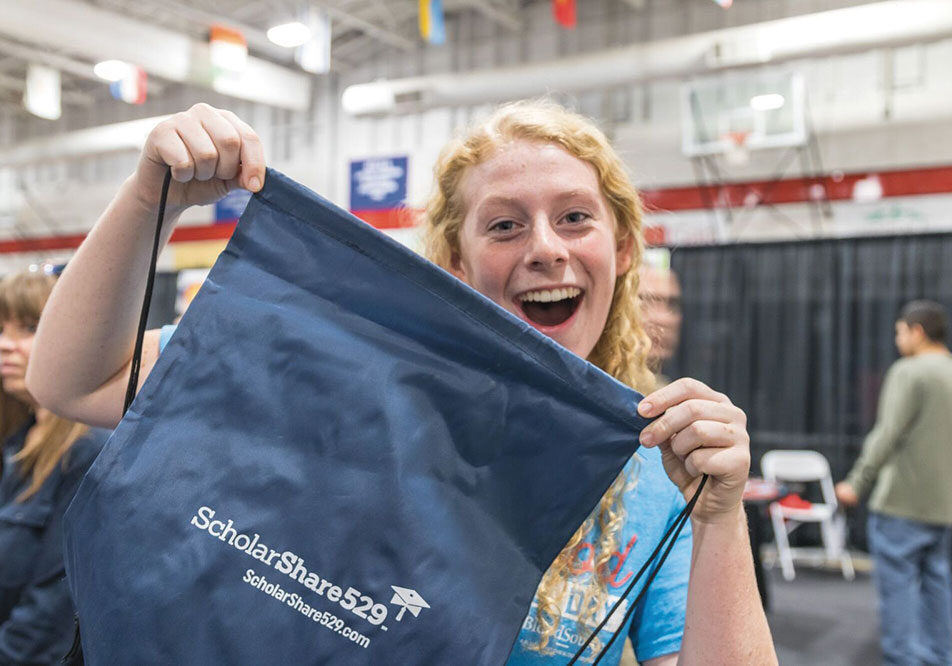Saving the hugs for humans can prevent an unsolicited bite, or scratch, or worse.
We’ve seen them posted online or traded between phones: the adorable home video clips capturing kid-and-pet antics. Who doesn’t admit to an “Awwww!” moment, as the preschooler wraps her arms around her dog’s fluffy neck, and presses her face to his nose? But for animal specialists, these scenes can be tense rather than tender. Why? The dog’s body language tells another story. His stiff posture, quick lip-licks, and his showing the moon-shaped white of an eye are all signs the dog is stressed. He clearly loves his child companion, but he doesn’t enjoy the tight hug.
When a dog bites or a cat scratches a child, parents often report that the animal was unprovoked – that it happened “out of the blue.” Yet Kim Latos, shelter manager at the Siskiyou Humane Society in Mt. Shasta, says there are always warning signs. Unfortunately kids – and often their parents – do not know how to read them. For instance, Latos says, “Dogs don’t like to be hugged. Kids always want to hug animals, but how often do we see animals hugging each other?” While many dogs tolerate this human display of affection, they also give clues about their discomfort. And when warning signs continue to go unheeded, a dog is at risk for snapping or biting out of frustration. 
Nearly half of American households include a dog, and almost 40 percent include a cat. Science shows that having companion animals leads to better physical and mental health. The simple act of stroking a pet’s fur can decrease anxiety and reduce blood pressure. Kids are often calmed by the presence of an animal, and many use a pet’s uncritical ear to sort through problems, or even improve their reading skills. But how many times do we take this unconditional love for granted?
We cannot expect our pets to be “on-call” 24/7, and sometimes our failure to read the “I need a break” clues has severe consequences. Statistics indicate that more than 75 percent of pet-related injuries to children are inflicted by a familiar pet, whether their own or a friend’s. Yet, until an incident occurs, most parents believe their pet to be completely kid-safe. One survey found that almost two-thirds of dog owners with children 0-5 years old believed that a 4-year-old would be safe unsupervised with their dog(s).
This is frustrating to experts like Latos who caution that any dog can bite, and any cat can scratch. Latos says the majority of animal bites and other pet-related injuries are preventable, and that it comes down to better supervision. “Children should never be left around pets unsupervised,” she says. “I can’t stress that enough.” Latos explains that pets use a repertoire of signs to show anxiety or discomfort, but a child is typically not developmentally ready to interpret the pet’s language and respond appropriately without assistance.
Kids are vulnerable for reasons often beyond their control. The vast majority of dog-related injuries to a young child are inflicted to the head and neck region. A child’s short stature means he can easily come face-to-face with a large dog. Katie Ball, CEO of the Love Your Pet Expo and Sanctuary in Redding, says, “Young children often smell like food.” This can lead to confusion. A dog might be licking a child’s face because there are has remnants of donuts, crackers, or chicken – and the child is thinking the dog wants to kiss!” says Ball. Face-to-face contact between a pet and child dramatically increases the risk of injury.
The typical behavior of young children can unintentionally provoke a dog or cat: they move quickly and erratically; they’re loud and have high-pitched voices, and their lack of coordination means they may stumble onto a pet’s body or tail. The younger a child is, the less able he is to empathize with a pet’s perspective. Therefore, it’s important that parents become informed and provide good supervision. Sometimes that may mean giving the pet a safe place to go, away from the child.
Both Latos and Ball do presentations of the “Be a Tree” program for schools and community groups. Ball says the program “teaches children how to read dog body language, and how to act safely around dogs.” Pictures, games, and interactive CDs are incorporated, which make the program a good teaching tool for even very young children. Ball explains that while education saves children from injury and trauma, it can actually save pets’ lives too. “The dog might have ‘cranky leave-me-alone’ days, especially as it gets older,” she says. “What do you think happens to a 10-year-old dog that’s bitten a child? It’s put down … that’s why this education is so important.”
Latos agrees. Though cat-related injuries are not associated with the same level of trauma as dog bites, the consequences for the cat can be just as dire. She encourages parents with questions about kid-pet issues to call their local humane organization, especially if there’s a behaviorist on staff. “If we can help with the home environment, it works in the long run. We want to prevent animals from coming to the shelter.”
So before you point a lens at that precious puppy-child scene, take a moment to see it from your dog’s perspective. If he’s not having as much fun as your child, it’s time to say “cut” and let the actors take a break.
Warning Behaviors in Pets
Dogs and cats display warning signs to show social discomfort. Always supervise child-pet interactions, and separate them if you see these signs:
- Stiff posture
- “Nervous” licking of lips and/or yawning
- Half-moon eye (where you see a crescent of white)
- Attempts to leave
- Tucked tail
- Lifted lip/snarl
In cats:
- Quickly-twitching tail
- Ears laid back or pointed back
- Eyes dilated
- Paw swipes
- Growling/hissing
The “Be A Tree” Program
“Be a Tree” is a dog bite prevention program. Children learn to interpret dog body language and make safe proactive decisions when interacting with dogs. Emphasis is on informed choice, not fear. Large photographs, interactive games, role-playing and practice are incorporated into two 15- 20-minute presentation segments.
What does it mean to “Be a Tree?”
- Stand still
- Hold your arms (branches) straight down
- Clasp hands in front of you (thigh level)
- Look down at your feet (watch your roots grow)
- Wait for the dog to leave
A child can “Be a Tree” when:
- Her own dog is too frisky
- A strange dog approaches her
- A dog makes her feel nervous/scared
- A dog is chasing her
Why does it work?
Movement excites dogs, but a “tree” standing still is boring. Dogs quickly move on to something more interesting.
Schedule a presentation:
- Katie Ball at Love Your Pet Expo (Redding)
- Kim Latos, Siskiyou Humane Society, (530) 926-4052 (Mt. Shasta)
- Doggone Safe offers more information about the “Be a Tree” program, including a list of presenters throughout North America, support for children who have been bitten, and excellent resources for parents about safe and loving dog-child relationships.
Pet Dos & Don’ts For Kids
- DO save your hugs and kisses for Mom, Dad, & other human family members.
- DON’T hug your pets – they don’t like it!
- DO watch what your pet is doing.
- DON’T have a staring contest. Staring makes dogs and cats nervous.
- DO give your pet a big “space bubble” while he is eating.
- DON’T play near your pet’s food or take food from him.
- DO scratch your cat on his neck and back.
- DON’T try to touch your cat’s belly.
- DO pat your dog on her back, sides, and neck.
- DON’T pull on your pet’s ears or put your face next to his face.
- DO offer a treat using a flat palm.
- DON’T feed a treat from between your fingers.
- DO play fetch and hide-n-seek with your dog.
- DON’T play chase games.
- DO dangle a string from a stick for your cat.
- DON’T let your cat’s toy hang next to your body.
- DO keep your body calm, tell stories, and sing quiet songs with your pet.
- DON’T scream, yell, or jump.
- DO dress up your stuffed animals.
- DON’T dress up your pets!
Pet Safety & Information Resources
- Living with Kids and Dogs…Without Losing Your Mind: A Parent’s Guide to Controlling the Chaos, book by Colleen Pelar. Head to the website for info and resources.
- Think Like a Cat: How to Raise a Well-Adjusted Cat – Not a Sour Puss, book by Pam Johnson-Bennett. Head to the website for info and resources.
- Tails Are Not for Pulling, by Elizabeth Verdick. A board book for very young children.
- Doggone Safe website. Support for children who have been bitten. Excellent information on dog behavior and family life with dogs, including books, interactive CDs, and board games.
- Family Paws Parent Education website. Certified dog behavior consultant Jennifer Shryock provides excellent information for the baby/toddler years. “Dogs & Storks” and “Dogs & Toddlers” programs are included.
- Family-oriented classes and/or school presentations focused on pet behavior, safety and care are offered through these local Human Societies:
Butte Humane Society website
Haven Humane Society website
Siskiyou Humane Society website
- Be a Tree Program: Presentations for classrooms and community groups in the Redding area may be scheduled with Katie Ball at
Love Your Pet Expo, or Doggone Safe.
Comment Policy: All viewpoints are welcome, but comments should remain relevant. Personal attacks, profanity, and aggressive behavior are not allowed. No spam, advertising, or promoting of products/services. Please, only use your real name and limit the amount of links submitted in your comment.
You Might Also Like...
Cuddle A Reader, Create A Reader – A Special Message And More For New Parents
“It’s never too early to start reading to your child.” This is the message that parents of newborns are hearing at Dignity Health Mercy Medical Center Redding (MMCR) before they […]

Fostering to Adoption – The Journey of a Lifetime
A blessing and a challenge Michael Logan and his wife, Terri, took their first steps into the world of foster/adoptive parents 26 years ago. “We were busy building our future […]

Family New Year’s Resolutions With Big Rewards
Six easy, enjoyable family resolutions As this year ends, the promise of new possibilities emerges with the coming of a new year. In addition to personal goals, many parents set […]
An Opportunity for Outdoor Adventure: NatureBridge in Yosemite
In 1989, a colleague of The McConnell Foundation’s President, Lee Salter mentioned to him an outdoor education program he thought the Foundation should get involved with. It turned out to […]
The Greenie Awards – Honoring Students Working Towards A Sustainable Future
Presented annually at the This Way to Sustainability Conference, the “Greenie Awards” honor students participating in programs that encourage youthful leadership in creating a sustainable future. The awards recognize bright […]




